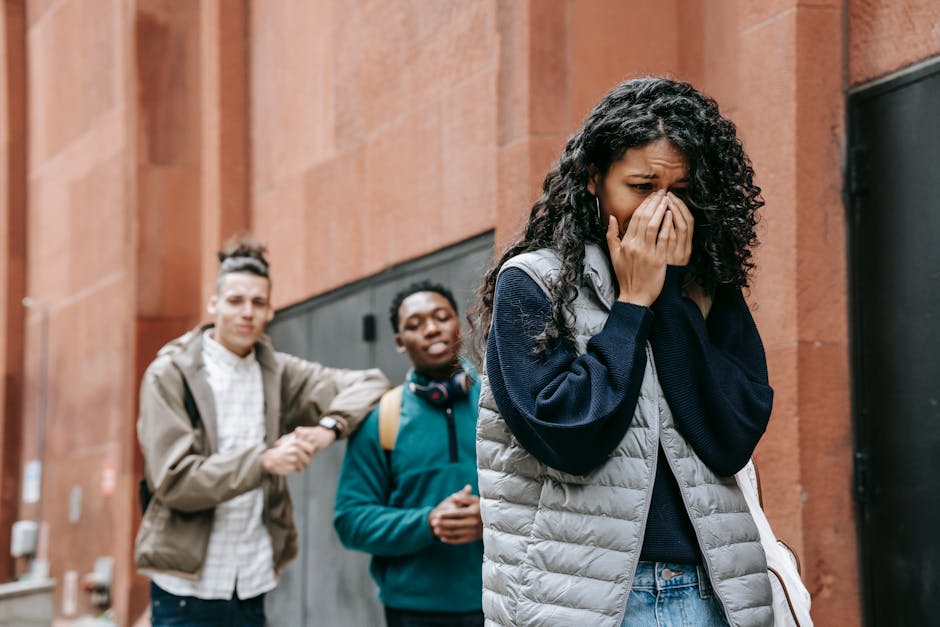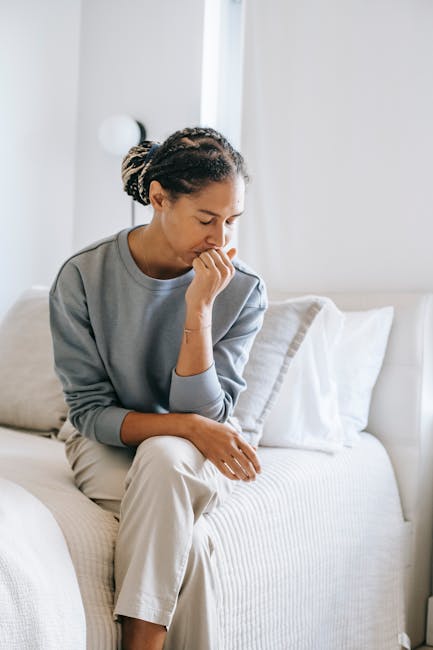Introduction to Phobias
Phobias are a common type of anxiety disorder that can cause significant distress and interfere with a person’s daily life. Understanding phobias, their causes, and treatment options can help individuals manage these fears and lead healthier, more fulfilling lives.
Definition of Phobias
A phobia is an excessive and irrational fear reaction. If you have a phobia, you may experience a deep sense of dread or panic when you encounter the source of your fear. The fear can be of a certain place, situation, or object. Unlike general anxiety disorders, a phobia is usually connected to something specific.
Common Types of Phobias
There are many different types of phobias, some of the most common include claustrophobia (fear of enclosed spaces), arachnophobia (fear of spiders), and acrophobia (fear of heights). More specific phobias, such as a fear of flying, can also significantly impact a person’s life. For more information on specific phobias, visit here.
Causes and Symptoms of Phobias
Phobias often develop in childhood or adolescence, and they may be caused by traumatic events, learned behavior, or genetic factors. Symptoms can include intense fear, rapid heartbeat, shortness of breath, trembling, and a strong desire to avoid the object or situation that triggers the fear.
Diagnosis of Phobias
Phobias are diagnosed based on a thorough clinical interview and diagnostic guidelines. The doctor will ask questions about your symptoms and take a medical, psychiatric and social history.

Overview of Treatment Options for Phobias
There are several treatment options available for phobias, including talking treatments, cognitive behavioural therapy (CBT), and medication. The choice of treatment depends on the type and severity of the phobia.
Talking Treatments
Talking treatments, such as counselling and psychotherapy, can help you understand and manage your phobia. These treatments can help you understand why you have your phobia and how to manage your reaction to the object or situation you fear.
Cognitive Behavioural Therapy (CBT)
CBT is a type of therapy that can help you manage your problems by changing the way you think and behave. It’s commonly used to treat a wide range of disorders, including phobias. CBT involves working with a therapist to identify thought and behaviour patterns that lead to distress and working to change these.
Medication
While medication can’t cure phobias, certain drugs can help reduce symptoms of anxiety and fear. These include:
Antidepressants
Antidepressants can help reduce anxiety and panic symptoms associated with phobias.
Tranquilizers
Tranquilizers can help relax and reduce anxiety.
Beta Blockers
Beta blockers can help block the stimulating effects of adrenaline and reduce physical symptoms of anxiety, such as a rapid heartbeat.

Detailed Look at Exposure Therapy
One of the most effective treatments for phobias is exposure therapy. This type of therapy involves gradually and repeatedly exposing you to the feared object or situation until your fear begins to decrease.
Definition of Exposure Therapy
Exposure therapy is a psychological treatment that was developed to help people confront their fears. When people are fearful of something, they tend to avoid the feared objects, activities, or situations. Although this avoidance might help reduce feelings of fear in the short term, over the long term it can make the fear become even worse. In such situations, a psychologist might recommend exposure therapy.
Different Types of Exposure Therapies
There are several types of exposure therapies, including in vivo exposure, virtual reality exposure, and imaginal exposure. In vivo exposure involves facing a real-life fear, virtual reality exposure uses technology to create a simulated fear situation, and imaginal exposure involves vividly imagining the feared object or situation. For more information on exposure therapies for specific phobias, visit here.
Conditions that Exposure Therapy Can Treat
Exposure therapy can be used to treat a wide range of phobias and other anxiety disorders, including social anxiety disorder, panic disorder, obsessive compulsive disorder, post-traumatic stress disorder, and generalized anxiety disorder.

The Process and Effectiveness of Exposure Therapy
Exposure therapy is a process that needs to be carried out in a controlled environment and under the guidance of a professional. It has been proven to be highly effective in treating phobias.
How Exposure Therapy Works
Exposure therapy works by gradually exposing you to the object or situation you fear in a safe and controlled way. Over time, this exposure helps reduce the fear and anxiety you feel. It can also help you gain control over your thoughts and feelings, rather than feeling overwhelmed by your fear.
Research Supporting the Use of Exposure Therapy
There is a wealth of research supporting the use of exposure therapy for treating phobias. Studies have shown that exposure therapy is highly effective in reducing fear and anxiety, and its effects can be long-lasting. For more information on the research supporting exposure therapy, visit here.

Choosing and Implementing Exposure Therapy
Choosing the right therapist and understanding the process of exposure therapy can make a significant difference in your treatment outcome.
How to Choose a Specialist for Exposure Therapy
When choosing a therapist for exposure therapy, it’s important to find someone who is experienced in this type of treatment. You should feel comfortable with the therapist and be able to trust them. It’s also important to find a therapist who is willing to work at your pace and respect your boundaries.
The Possibility of Self-Administered Exposure Therapy
While it’s possible to do exposure therapy on your own, it’s generally recommended to do it under the guidance of a trained professional. This is because exposure therapy can be challenging and may initially increase your anxiety. A professional can ensure that the process is carried out safely and effectively.
The Takeaway: Benefits and Challenges of Exposure Therapy
Exposure therapy can be a highly effective treatment for phobias, but it can also be challenging. It requires facing your fears, which can be uncomfortable and anxiety-provoking. However, with the right support and guidance, exposure therapy can help you overcome your phobias and improve your quality of life.
For more information on how to manage anxiety and stress, visit here.
Remember, it’s okay to seek help. You don’t have to face your fears alone. Reach out to a professional today and start your journey towards a #PhobiaFree life. #FearOfFlying #AnxietyWarrior
Frequently Asked Questions (FAQ) – The Use of Exposure Therapy to Treat Phobias
What is exposure therapy?
Exposure therapy is a type of cognitive-behavioral therapy that aims to reduce fear and anxiety by gradually exposing individuals to the feared object or situation. It involves facing the fear in a controlled and safe environment, allowing the person to learn that their fear is irrational and that they can cope with it.
How does exposure therapy work?
Exposure therapy works by gradually exposing individuals to the feared object or situation, starting with less anxiety-provoking aspects and progressing to more challenging ones. This process helps individuals confront their fears and learn that their anxiety will decrease over time. Through repeated exposure, the person’s fear response diminishes, and they develop new, more adaptive beliefs and behaviors.
What types of phobias can be treated with exposure therapy?
Exposure therapy can be used to treat various phobias, including specific phobias (e.g., fear of spiders, heights), social phobia (fear of social situations), and agoraphobia (fear of open spaces or crowded places). It can also be effective in treating post-traumatic stress disorder (PTSD) and obsessive-compulsive disorder (OCD).
Is exposure therapy effective?
Yes, exposure therapy has been found to be highly effective in treating phobias. Research studies have consistently shown that exposure therapy leads to significant reductions in fear and anxiety symptoms. It is considered one of the most evidence-based and successful treatments for phobias.
What are the benefits of exposure therapy?
Exposure therapy offers several benefits. It helps individuals confront their fears and regain control over their lives. By gradually facing their fears, people learn that they can tolerate anxiety and that their fears are often unfounded. Exposure therapy also helps individuals develop new coping strategies and build resilience, leading to long-lasting improvements in their overall well-being.
Is exposure therapy suitable for everyone?
Exposure therapy may not be suitable for everyone. It is important to consult with a qualified mental health professional to determine if exposure therapy is appropriate for an individual’s specific needs. In some cases, alternative therapies or a combination of different treatment approaches may be more suitable.
Are there any potential side effects of exposure therapy?
Exposure therapy is generally safe and well-tolerated. However, some individuals may experience temporary increases in anxiety or distress during the exposure sessions. These reactions are typically short-lived and subside as the person continues with the therapy. It is important to work closely with a therapist who can provide support and guidance throughout the treatment process.
How long does exposure therapy take?
The duration of exposure therapy varies depending on the individual and the specific phobia being treated. In general, treatment can range from a few weeks to several months. The frequency and duration of therapy sessions are determined by the therapist based on the person’s progress and treatment goals.
Can exposure therapy be done without a therapist?
While exposure therapy is most effective when conducted with the guidance of a trained therapist, some self-help resources and books are available for individuals who prefer to try exposure exercises on their own. However, it is important to note that working with a therapist provides personalized support, ensures proper implementation of the therapy, and maximizes the chances of successful outcomes.
What should I expect during an exposure therapy session?
During an exposure therapy session, you can expect to work collaboratively with your therapist to identify specific fears or triggers. The therapist will guide you through gradually confronting these fears in a controlled manner. This may involve imagining the feared situation, looking at pictures, or eventually engaging in real-life exposures. The therapist will provide support, encouragement, and techniques to manage anxiety throughout the process.



